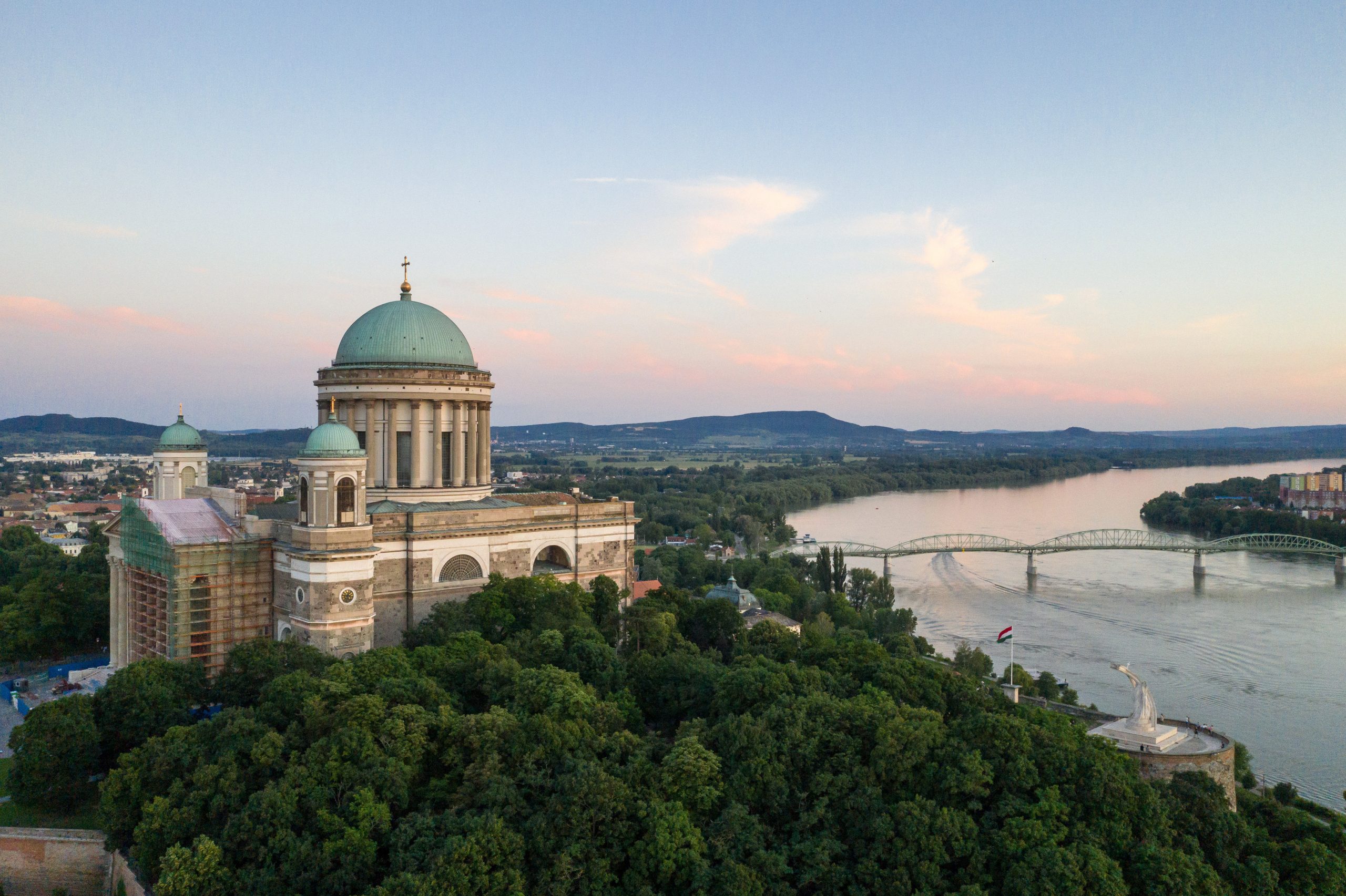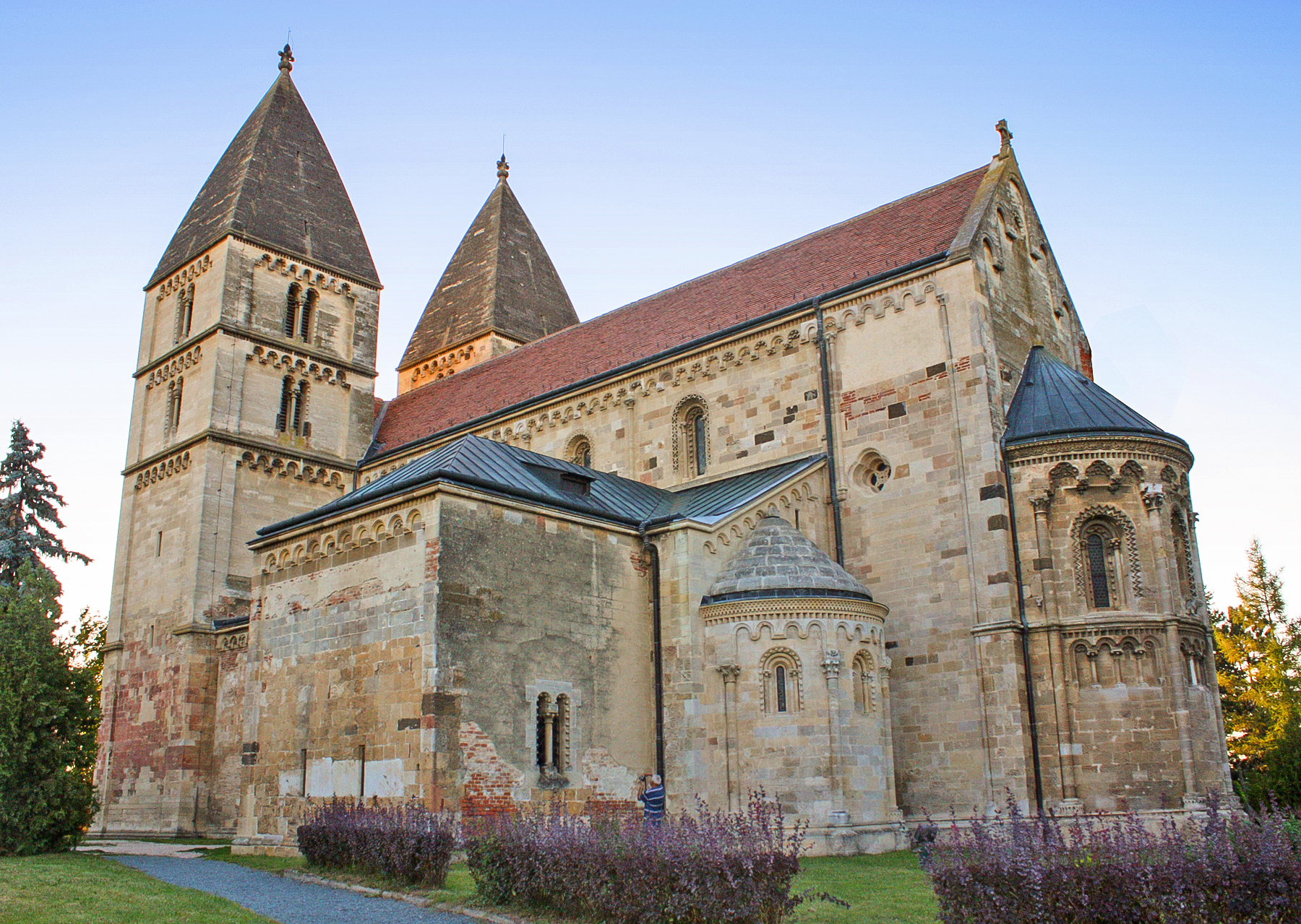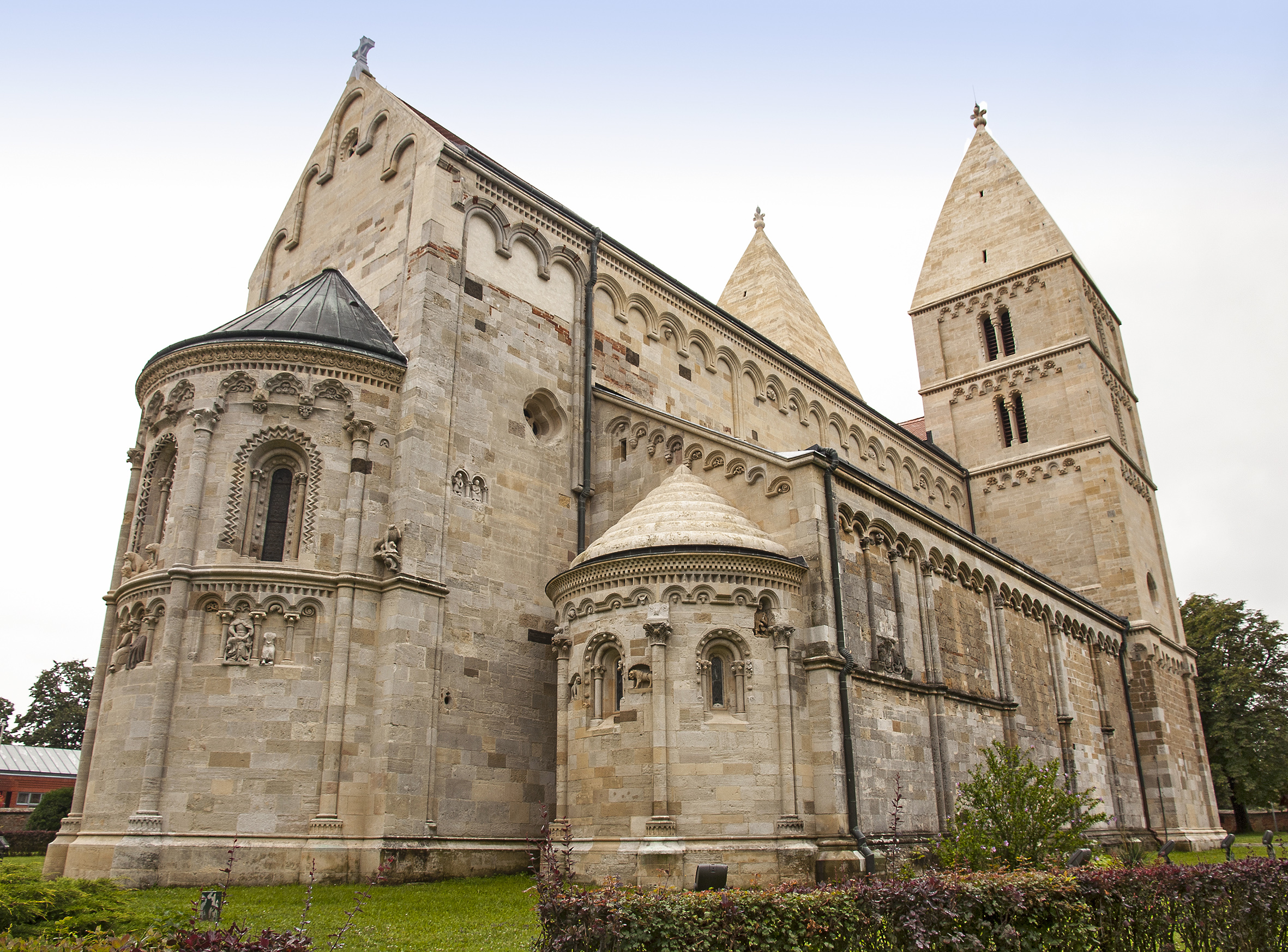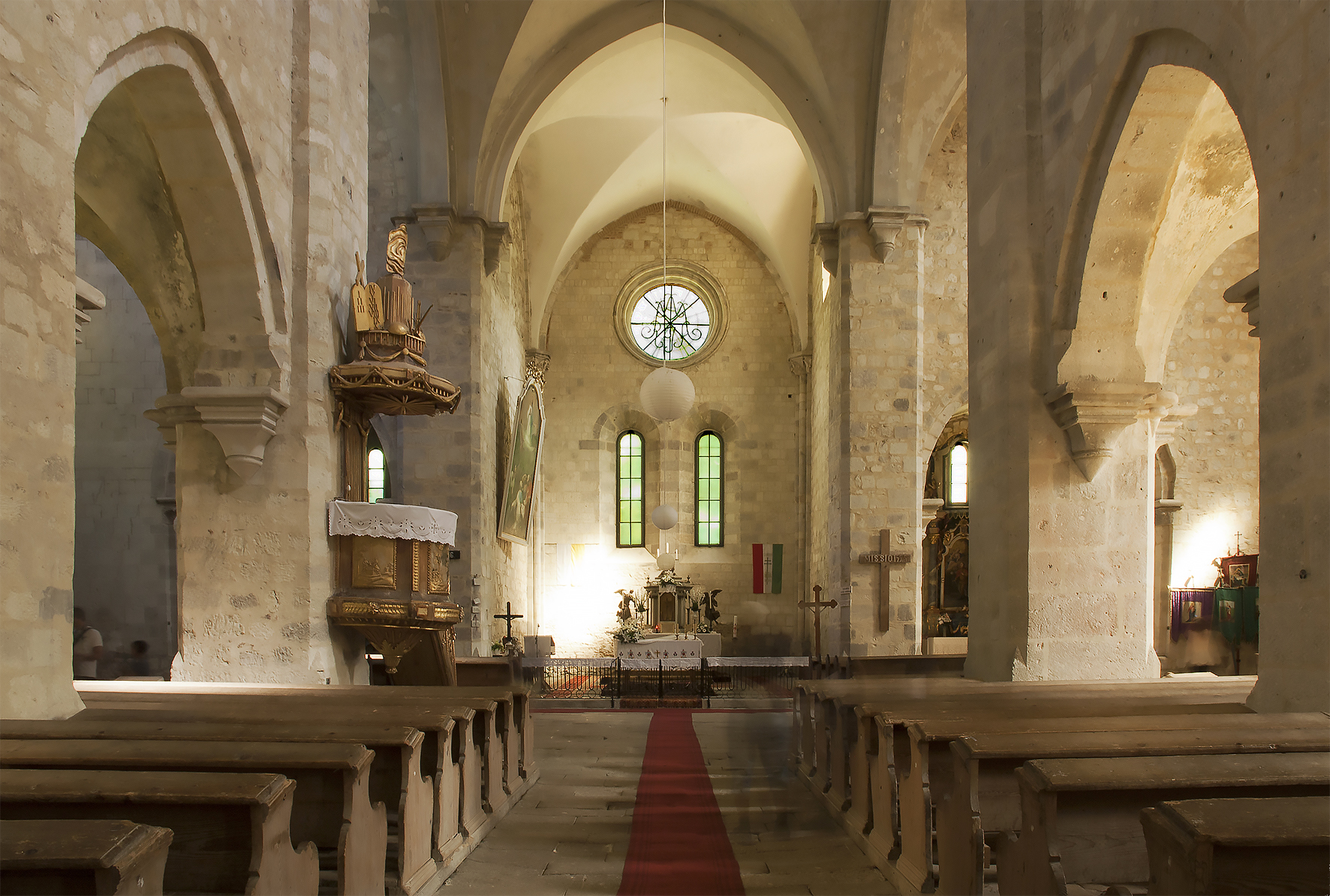
The copper canister within the cross of the basilica’s 100-metre-tall dome was damaged during a World War two bombing, but the documents within it, revealed after decades of being hidden, have remained in near-perfect condition.Continue reading

For today’s people, getting to know the medieval world can be an exciting and fascinating journey through time. The deep religious worldview of the people of that time can best be conveyed through the old churches, which is why it is so important to renovate and restore them. In churches that have regained their original form, people of the 21st century can more easily get an idea of medieval times. Article written by Sándorné Szlovák.
This article was originally published on our sister-site, Ungarn Heute.
Medieval peasants lived in wooden or mud huts, often in caves (e.g., in England and Scotland). They worked 12 to 15 hours a day in their fields and had a fairly monotonous diet. In most parts of Europe, farmers only had a small piece of land to farm in order to feed their families. Of course, they did not own this land. They could only cultivate it, for which they owed money, crops, and labor to the landlords who actually owned the land.
In contrast, most medieval landlords and kings lived in their own castles, where they had large court staff. Castles were not only centers of defense and warfare, but also centers of social life. But even so, the life of castle dwellers was not easy. After all, castles were primarily for protection, not for comfort: the walls were thick and the windows small, so that little heat and light could enter the building from the outside. The larger rooms could barely be heated and the inhabitants lived in constant cold and darkness, not to mention the very unpleasant smells.
The role of the church was all the more important at that time. First and foremost, it was the central place of worship. In the Middle Ages, however, the importance of the church grew beyond that – it was often the only stone building in the whole area. The church tower was visible from afar and showed the way to those who came from far away. On Sundays, the whole country flocked to the church, which held the community together and protected it.
The church comprehensively determined the lives of the population. Faith was extremely important for people because they were very afraid of death. And because people firmly believed in purgatory, the strangest methods were accepted to escape it.
Prince Géza and his son, King Stephen I and founder of the Hungarian state, realized that the Hungarian people could only continue to exist if a stable feudal state was established and Christianity was accepted. Géza called Benedictine monks from Italy and Bohemia to the country to spread Christian ideas and European culture. They built their first monastery in the small Hungarian town of Pannonhalma in honor of the Pannonia-born bishop from Tours, France, who later became known as Saint Martin.
The Benedictine Archabbey of Pannonhalma is a central place of the church and spiritual life in Hungary. The abbey, which has existed for more than a thousand years and is still home to around 50 Benedictines, is the country’s most important spiritual center, along with the Hungarian cathedral city of Esztergom. The renovation works of the Pannonhalma Abbey extended over many years. The last time the church was renovated was in 2012. During the restoration, the most important goal was to give the church back its monastic character. Another reason was so the monks living here would have a true home. The monastic community is also the sponsor of a high school, including a boarding school as well as a retirement home for clergy in need of care. In its library, there are more than 400,000 volumes, and the founding document of Tihany Abbey (the oldest preserved complete document in Hungary from 1055) is kept here.

Esztergom. Photo by Sándorné Szlovák
Abbey churches in German-speaking Europe are also beautified
Renovation of the facades of the former abbey church of St. Michael in Bamberg (Germany)
As late as December 2021, there was good news from Bayreuth: the government of Upper Franconia had promised urban development funding of 6.7 million euros for the renovation of the facades of the Abbey Church of St. Michael.
The monastery complex of St. Michael, which dominates the cityscape and was founded in 1015 by Bamberg’s first bishop Eberhard, was in acute danger of collapse. After the structural repair, the restoration is now underway.
In Bamberg, renovation measures in a number of construction phases have been carried out at the former Benedictine Abbey of St. Michael since 2009. The total costs for these measures at the monastery complex, which have already been completed and are scheduled to continue until 2030, amount to approximately 80,000,000 euros.
(Source: stadt.bamberg.de/Unsere-Stadt/Kultur-und-Kunst)
Payerne Abbey (Switzerland)
The renovation of the Abbey of Payerne took thirteen years.
From July 2020, Switzerland’s largest Romanesque church is once again open to the public. The abbey of Payerne (VD) looks back on a history of over a thousand years and has been a listed building since 1900. However, the largest Romanesque church in Switzerland was in danger of collapsing. More than 1,000 workers from specialized companies worked to repair the damage.
Collegiate Church of St. Peter Salzburg (Austria)
The Archabbey of St. Peter is the oldest monastery in the German-speaking world with unbroken continuity. Benedictine monks have lived and worked there for more than 1300 years.
The renovation of the collegiate church of St. Peter (2021) ended with the renewal of the priest’s chair. The people’s altar and reading desk were finished earlier.
The Archabbey of St. Peter is considered the oldest monastery in the German-speaking world. Monks have lived, prayed, and worked here since 696.
(Source: erzabtei.at/de/kloster)
Hauterive Abbey in Switzerland
Hauterive Abbey is undergoing a rejuvenation.
Restoration work on the Abbey of Sainte-Marie d’Hauterive, not far from Fribourg, began last year. A complete exterior and interior restoration is planned. The facade, frescoes, stained glass windows, and the stalls will be restored. The technical installations will be brought up to date and thermal comfort will be improved.
The abbey was founded in 1138 in a loop of the Saane ditch by the local prince Guillaume de Glâne. He came from Cherlieu in the French Jura. A Cistercian community settled on the territory of the present-day commune of Posieux. It was dedicated to prayer, work, and fraternal life.
(Source: kath.ch/newsd/die-abtei-hauterive-wird-einer-verjuengungskur-unterzogen)
The beautiful village of Ják is located on the western border of Hungary, about 10 kilometers south of Szombathely. The abbey church in Ják is one of the most important late Romanesque churches in Hungary.
It was founded around 1220 and consecrated in honor of St. George in 1256. During the construction phase, the plans may have been changed several times, as shown by various irregularities. It has a troubled history: damaged by fire, storm, and the Ottoman army, it had to be restored several times. Its most famous feature is the main entrance, which is recessed inward and has several sections, decorated with Norman motifs, and above which Jesus is depicted in the tympanum with angels and apostles. Opposite the main facade of the church, there is a small chapel. This is the Chapel of St. James, which in the Middle Ages was the church of Jac since the monastery church was not allowed to function as a parish church.
The last renovation works of the church started in 2020 and are still ongoing.

Ják. Photo by Sándorné Szlovák
The Cistercian monastery, located in Bélapátfalva – the Hungarian small town situated in Heves County (Northern Hungary) – is the only intact Romanesque abbey church in Hungary. It is located at the foot of the 815 m high Bél-Kő (Bél Stone), next to a spring (Háromkút) on a wooded and hilly slope. The renovation of the abbey is being funded by a state grant, the money being used for both interior and exterior renovation of this important religious, cultural, and historical site.

Bélapátfalva. Photo by Sándorné Szlovák
Within its walls, time seems to have stopped. When you enter, the noises and worries of the outside world disappear and only a deep silence remains, a feeling of peace and boundless tranquility. The arrangement of arches, columns, and pews radiates harmony and order, the wide and impressive spaces proclaim with dignity the power of faith, spirit, human knowledge, and will.
The abbey is not only a museum but also a living religious site. Masses are celebrated here every two weeks between Easter and the Assumption – from April to August – and beautiful weddings also take place here, as young couples from all over the country come here to tie the knot in this church.
The Holy Trinity Church in Velemér is located in the Hungarian Őrség, which is an untouched natural treasure near the Slovenian and Austrian borders. This 12th-century church is one of the most valuable churches in Hungary, preserving unique fresco fragments in their original state. It is known as the Church of Light because the sun shining through the narrow windows illuminates different frescoes at different times of the day. So the current scenes are always illuminated – on January 6, for example, the light beam falls on the Star of Bethlehem. There is only one area of the wall that never receives light through the windows, and that is the place where the depiction of hell is located.
In the second half of the 19th century, the famous monument conservator, Rómer Flóris, and the village teacher Imre Gózon drew attention to the extraordinary artistic value of the church. Subsequently, the church was restored several times, in 1968 and most recently in 2003.

Photo by Sándorné Szlovák
There are a lot of other small but all the more beautiful village churches in Hungary from the early Middle Ages, in Csaroda, Csempeszkovács, Csengersima, Cserkút, Dörgicse, Egregy, Őriszentpéter, Lébény – the list could go on and on.
There are small churches in even smaller villages that even Hungarians don’t know about. So it is worth visiting our country. Come to Hungary and let’s discover together the early Christian jewel boxes from the Romanesque era.
Sources:
br.de/radio/bayern2/programmkalender,
tudasbazis.sulinet.hu/hu/tarsadalomtudomanyok/tortenelem/a-kozepkor-tortenete-476-1492,
tortenelemtanulas.blog.hu/2014/06/17/igy_elt_a_kozepkor_embere, divany.hu/vilagom/elet-a
kozepkori-varban, mittelalter-genealogie.de/die-macht-der-kirche-im-mittelalter
Featured image via Sándorné Szlovák